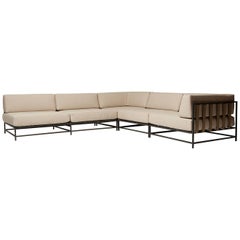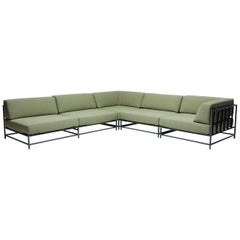Stephen Kenn Outdoor Sectional
2010s American Modern Sectional Sofas
Steel
2010s American Modern Loveseats
Steel
People Also Browsed
2010s Danish Scandinavian Modern Dining Room Chairs
Oak
2010s British Mid-Century Modern Daybeds
Bouclé, Oak
21st Century and Contemporary Swedish Mid-Century Modern Table Lamps
Textile
2010s European Mid-Century Modern Wall Lights and Sconces
Brass
Vintage 1960s American Mid-Century Modern Swivel Chairs
Bouclé, Walnut
2010s American Ottomans and Poufs
Zebra Hide
21st Century and Contemporary Italian Modern Coffee and Cocktail Tables
Blown Glass
2010s Italian Wardrobes and Armoires
Walnut
2010s Portuguese Mid-Century Modern Dining Room Tables
Stone, Limestone, Travertine, Marble
Vintage 1970s Italian Post-Modern Beds and Bed Frames
Wood, Elm
Early 2000s Italian Modern Sectional Sofas
Chrome
2010s Spanish Post-Modern Wall Lights and Sconces
Brass, Other
2010s French Modern Screens and Room Dividers
Travertine, Metal, Brass
2010s American Modern Sofas
Walnut, Canvas
2010s American Other Sectional Sofas
Wenge
Vintage 1970s American Mid-Century Modern Sectional Sofas
Upholstery, Wood
Stephen Kenn Outdoor Sectional For Sale on 1stDibs
How Much is a Stephen Kenn Outdoor Sectional?
Stephen Kenn for sale on 1stDibs
Favoring used materials that wear well and tell a story, Canadian artist and furniture designer Stephen Kenn aims “to create products worthy of repair.” For instance, making comfortable pillows out of vintage, military-issued shelter halves is one way in which Kenn’s pieces facilitate a conversation as rich as the history that inspires them.
Kenn is a passionate designer and entrepreneur. In his early 20s, Kenn set up shop in Los Angeles and co-created two denim companies before selling them to investors. Kenn then focused on constructing men’s travel luggage through his third company. Once again, he went on to sell the company to investors. He shifted to making industrial-style furniture to match his loft apartment. Kenn took apart a vintage sofa and armchair to discover their inner workings and repurposed them into his designs. Through this experimentation, his fourth business, Stephen Kenn Furniture, was born. His wife, Beks Opperman, handled the business end while Kenn advanced his creative process.
Kenn had access to a large array of military fabrics, which became central to his Inheritance Collection. Along with repurposing the fabrics, Kenn welded rusted steel frames covered in a protective coating. Replica “mule belts,” originally used for pack mules in World War II, complemented the tarnished metal and supported the backs of his sofas.
In 2019, Kenn partially opened his downtown Los Angeles loft to the public as an experiential showroom that holds a collection of his work and favorite items from the past. It is open for community events and overnight stays and houses a popular neighborhood coffee shop.
On 1stDibs, find a collection of Stephen Kenn’s seating, tables and more.
A Close Look at Modern Furniture
The late 19th and early 20th centuries saw sweeping social change and major scientific advances — both of which contributed to a new aesthetic: modernism. Rejecting the rigidity of Victorian artistic conventions, modernists sought a new means of expression. References to the natural world and ornate classical embellishments gave way to the sleek simplicity of the Machine Age. Architect Philip Johnson characterized the hallmarks of modernism as “machine-like simplicity, smoothness or surface [and] avoidance of ornament.”
Early practitioners of modernist design include the De Stijl (“The Style”) group, founded in the Netherlands in 1917, and the Bauhaus School, founded two years later in Germany.
Followers of both groups produced sleek, spare designs — many of which became icons of daily life in the 20th century. The modernists rejected both natural and historical references and relied primarily on industrial materials such as metal, glass, plywood, and, later, plastics. While Bauhaus principals Marcel Breuer and Ludwig Mies van der Rohe created furniture from mass-produced, chrome-plated steel, American visionaries like Charles and Ray Eames worked in materials as novel as molded plywood and fiberglass. Today, Breuer’s Wassily chair, Mies van der Rohe’s Barcelona chair — crafted with his romantic partner, designer Lilly Reich — and the Eames lounge chair are emblems of progressive design and vintage originals are prized cornerstones of collections.
It’s difficult to overstate the influence that modernism continues to wield over designers and architects — and equally difficult to overstate how revolutionary it was when it first appeared a century ago. But because modernist furniture designs are so simple, they can blend in seamlessly with just about any type of décor. Don’t overlook them.

